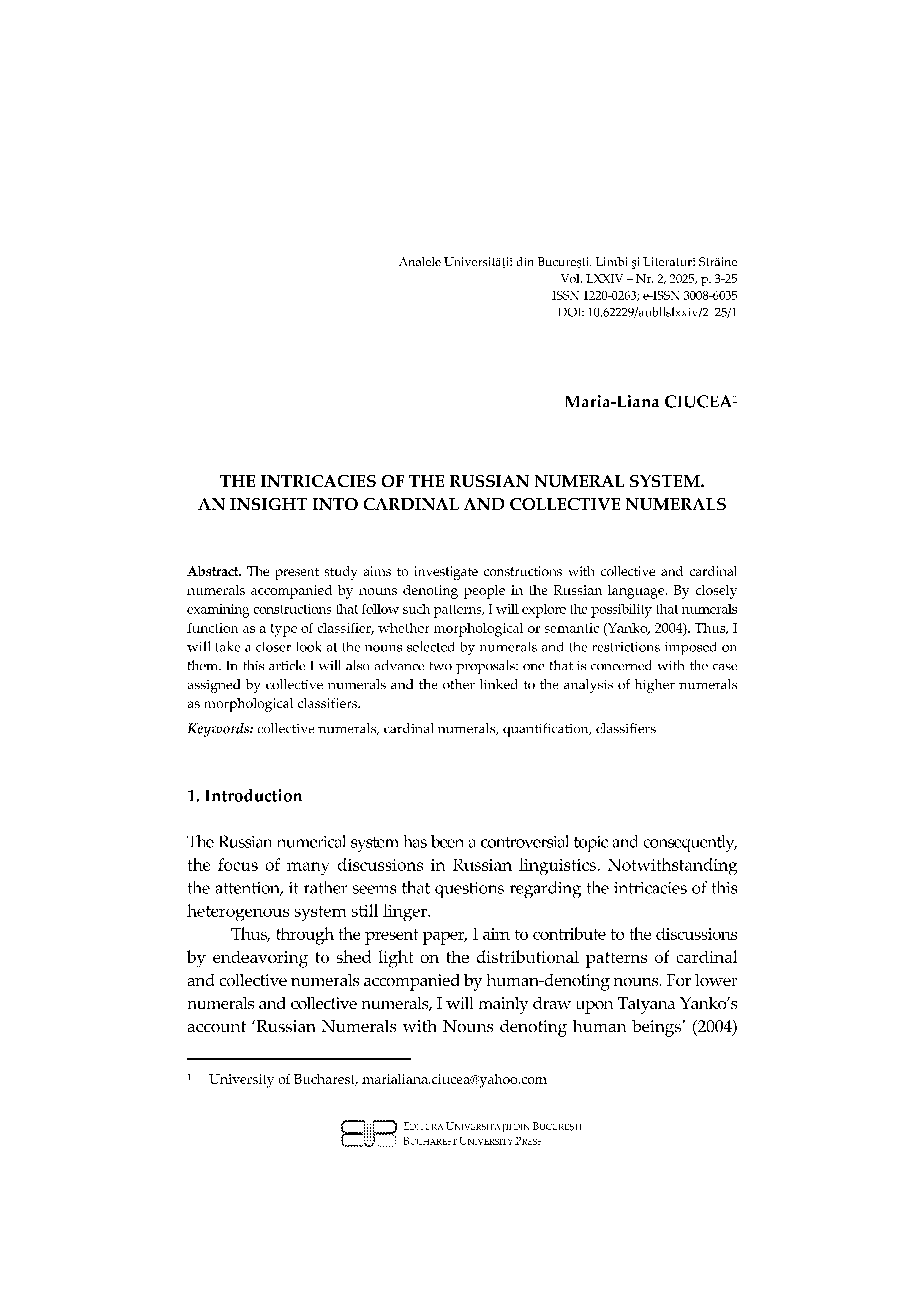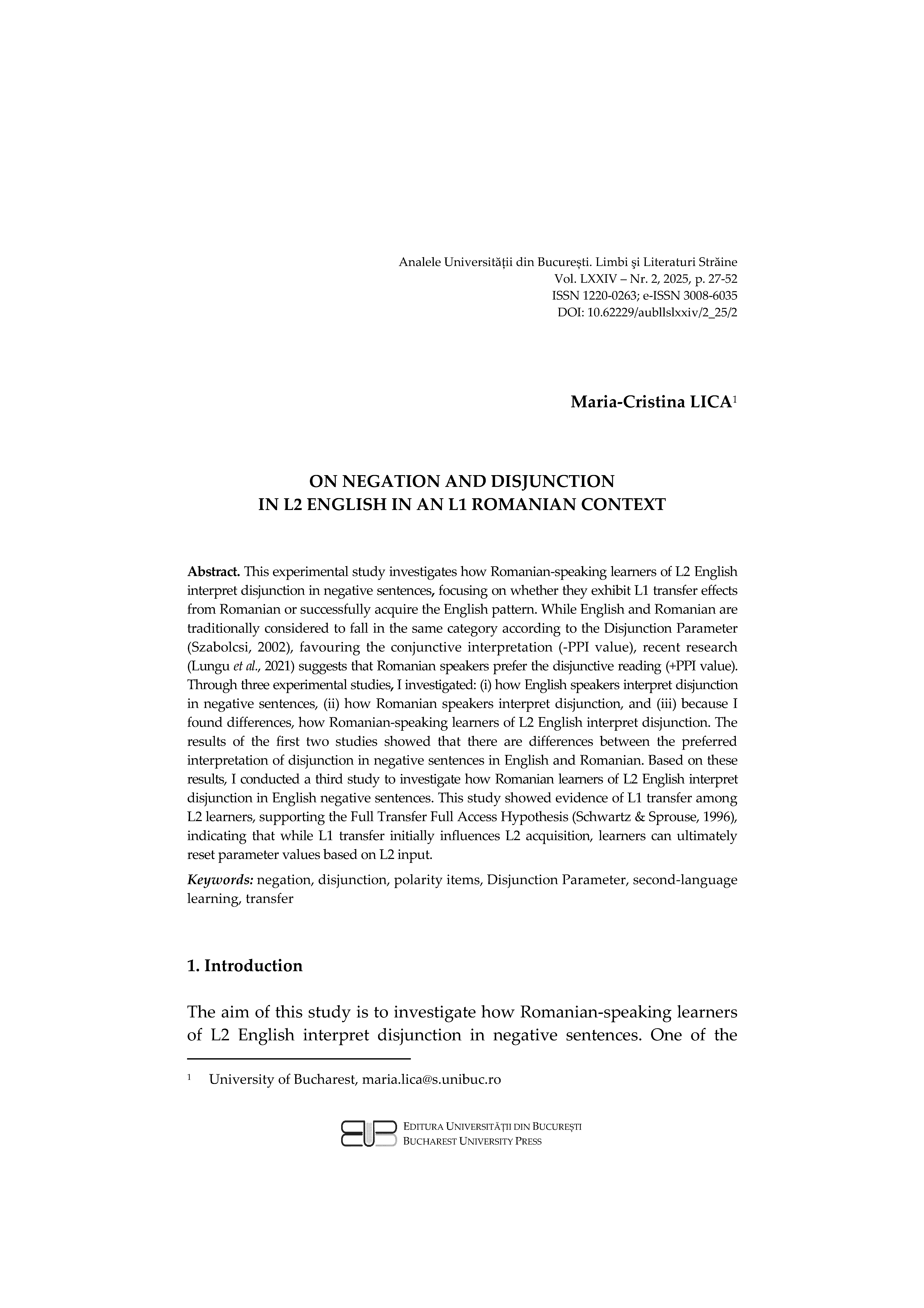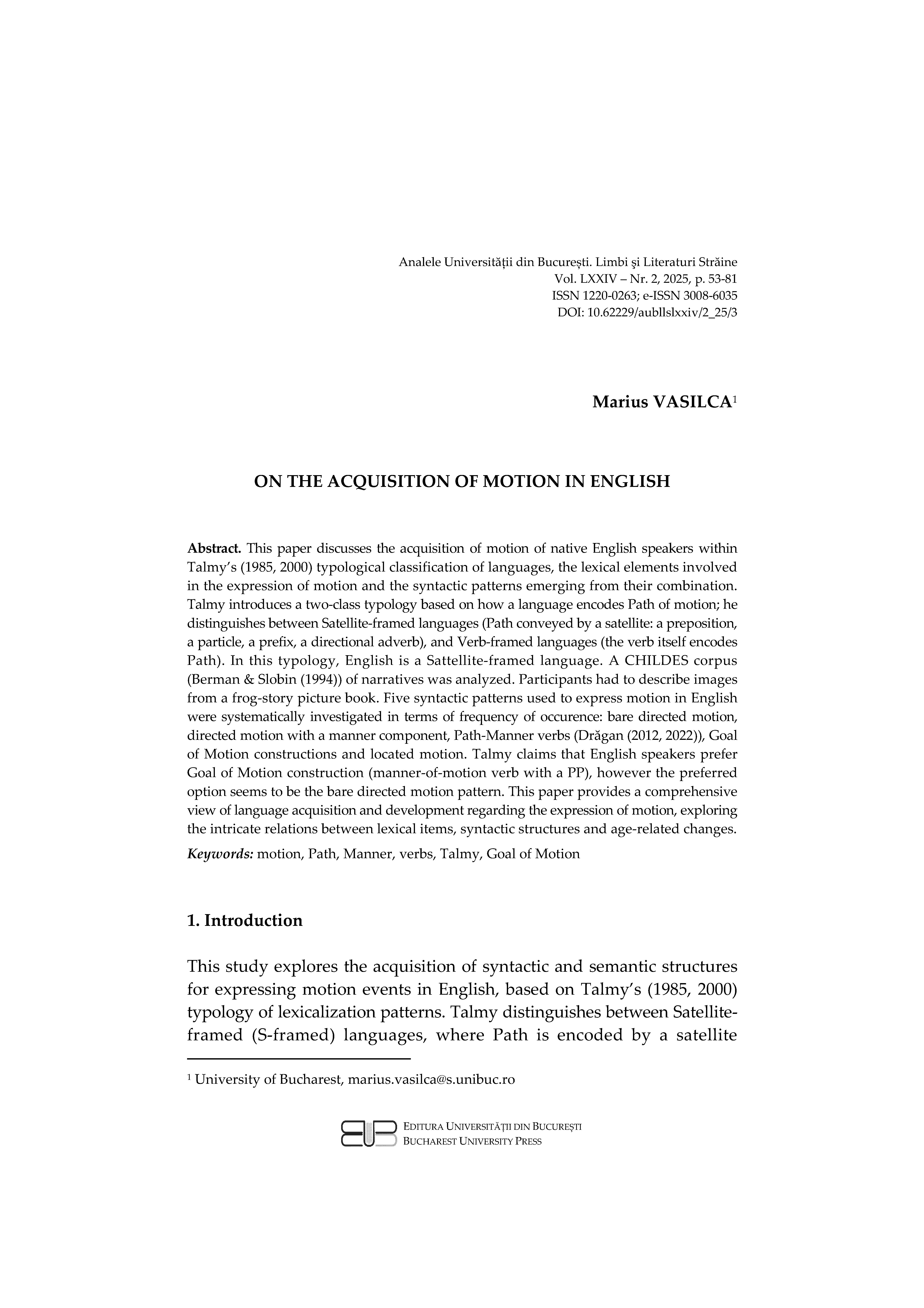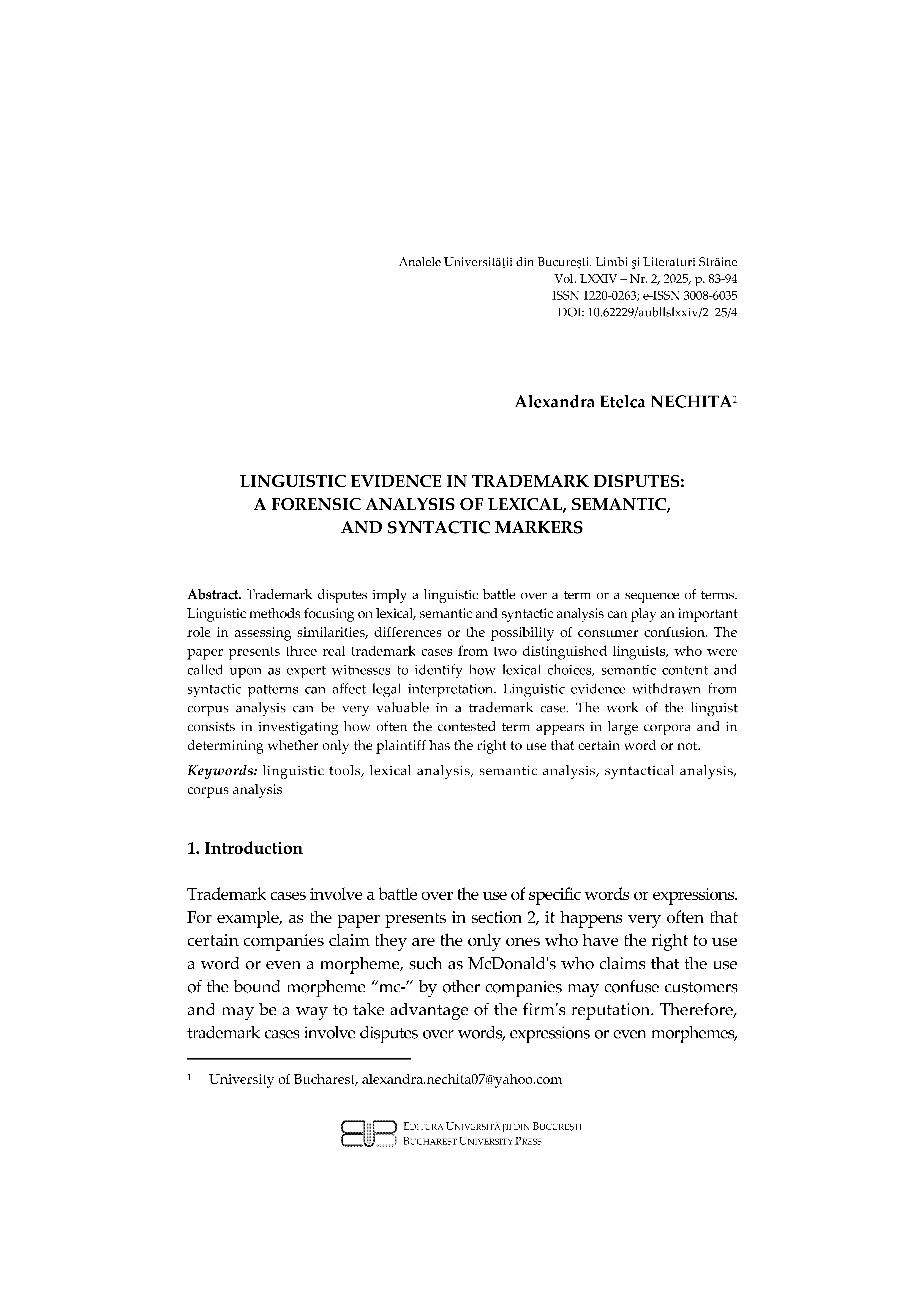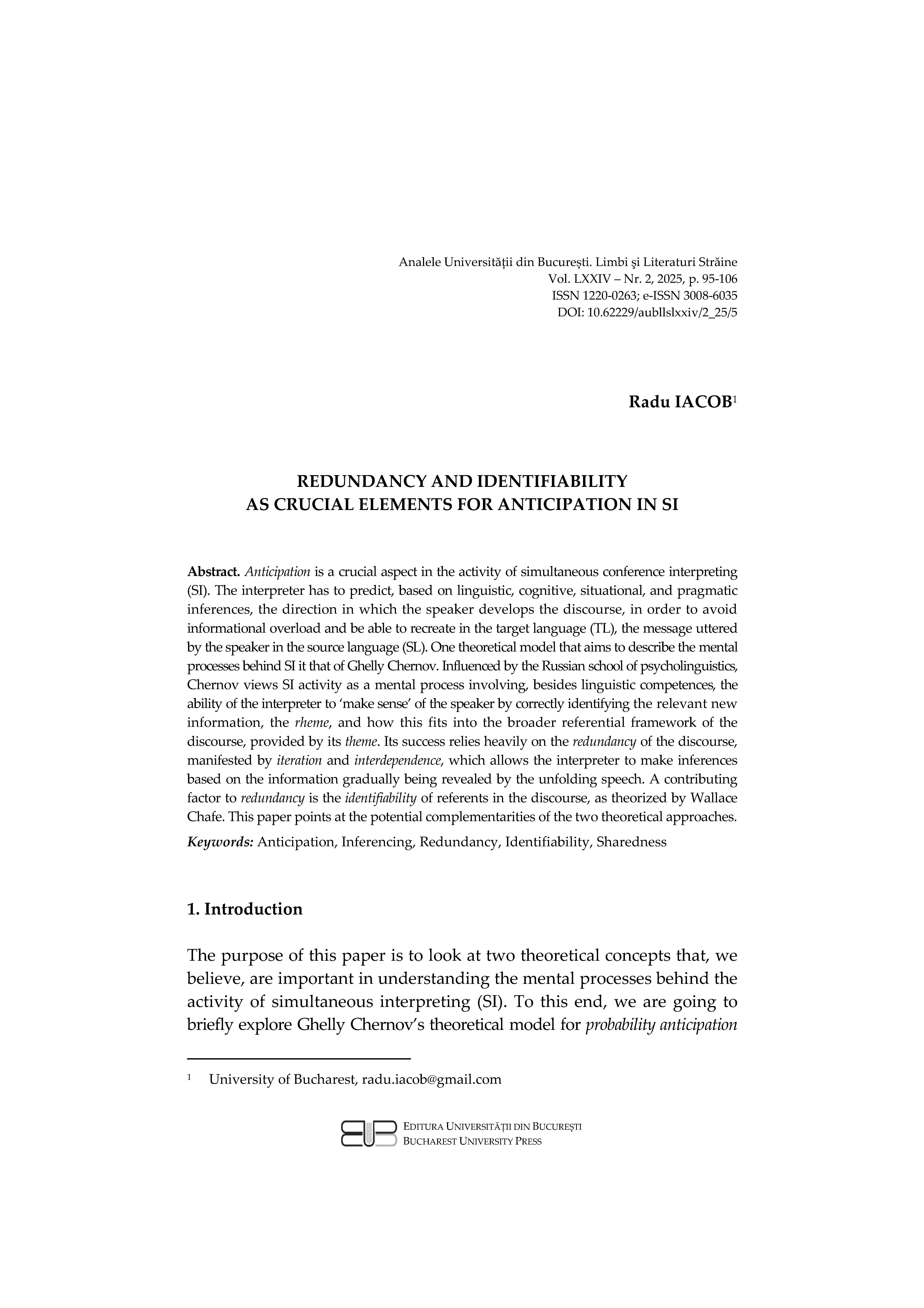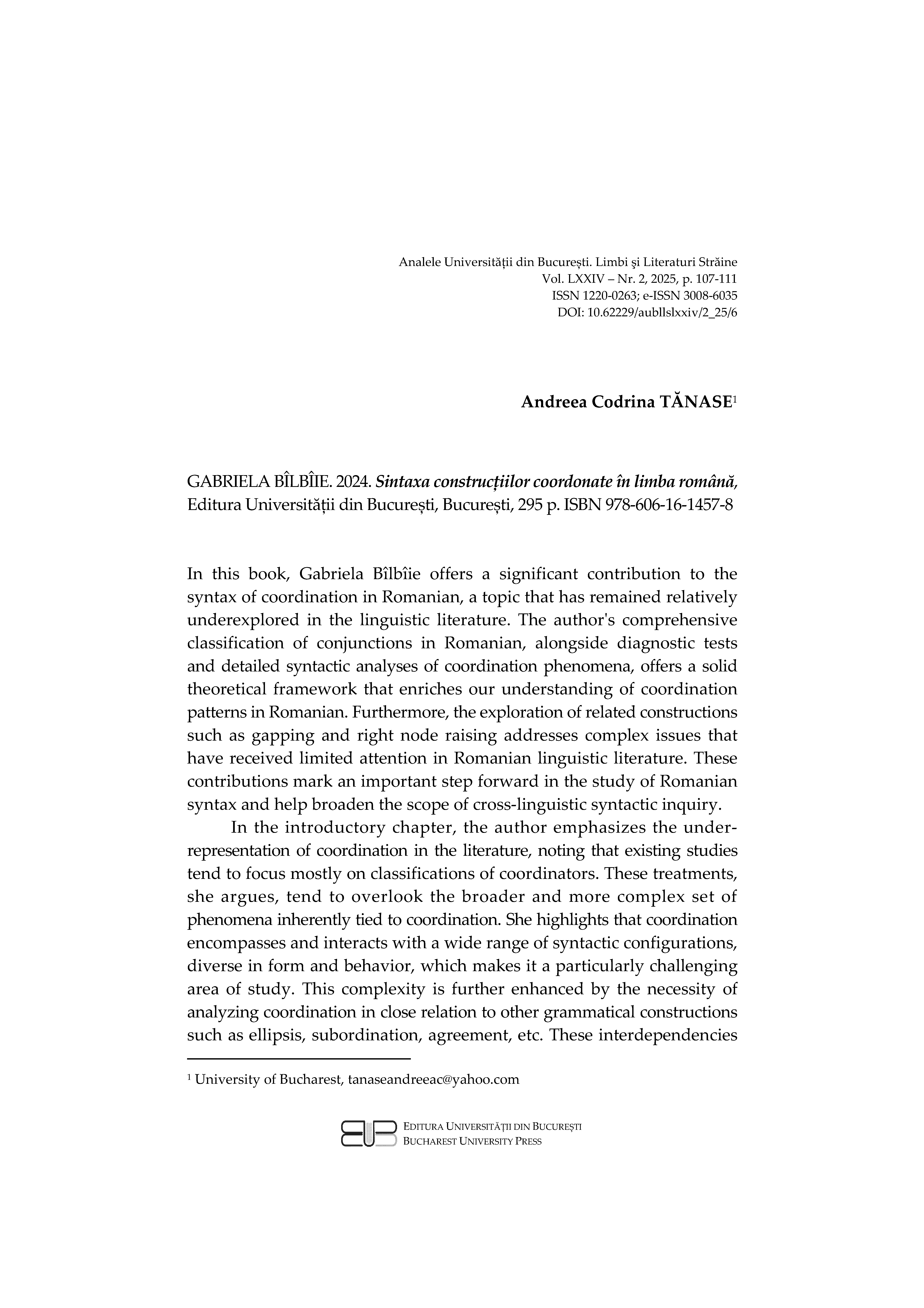About the Journal
Analele Universității din București. Limbi și Literaturi Străine (“The Annals of the University of Bucharest”, Foreign Languages and Literatures) is a biannual scientific journal which covers a broad range of topics in linguistics, literature, cultural studies and translation studies.
Commenced publication: 1952
ISSN: 1220-0263
ISSN 3008-6035 (online)
ISSN-L 1220-0263
The Annals of the University of Bucharest, Foreign Languages and Literatures is an open access journal distributed in accordance with the CC-BY-NC-ND (Creative Commons Attribution – NonCommercial – NoDerivatives 4.0 International) license: the work can be used by mentioning the author and the license, but only for non-commercial purposes and only in the original version. For further information HERE.
Current Issue
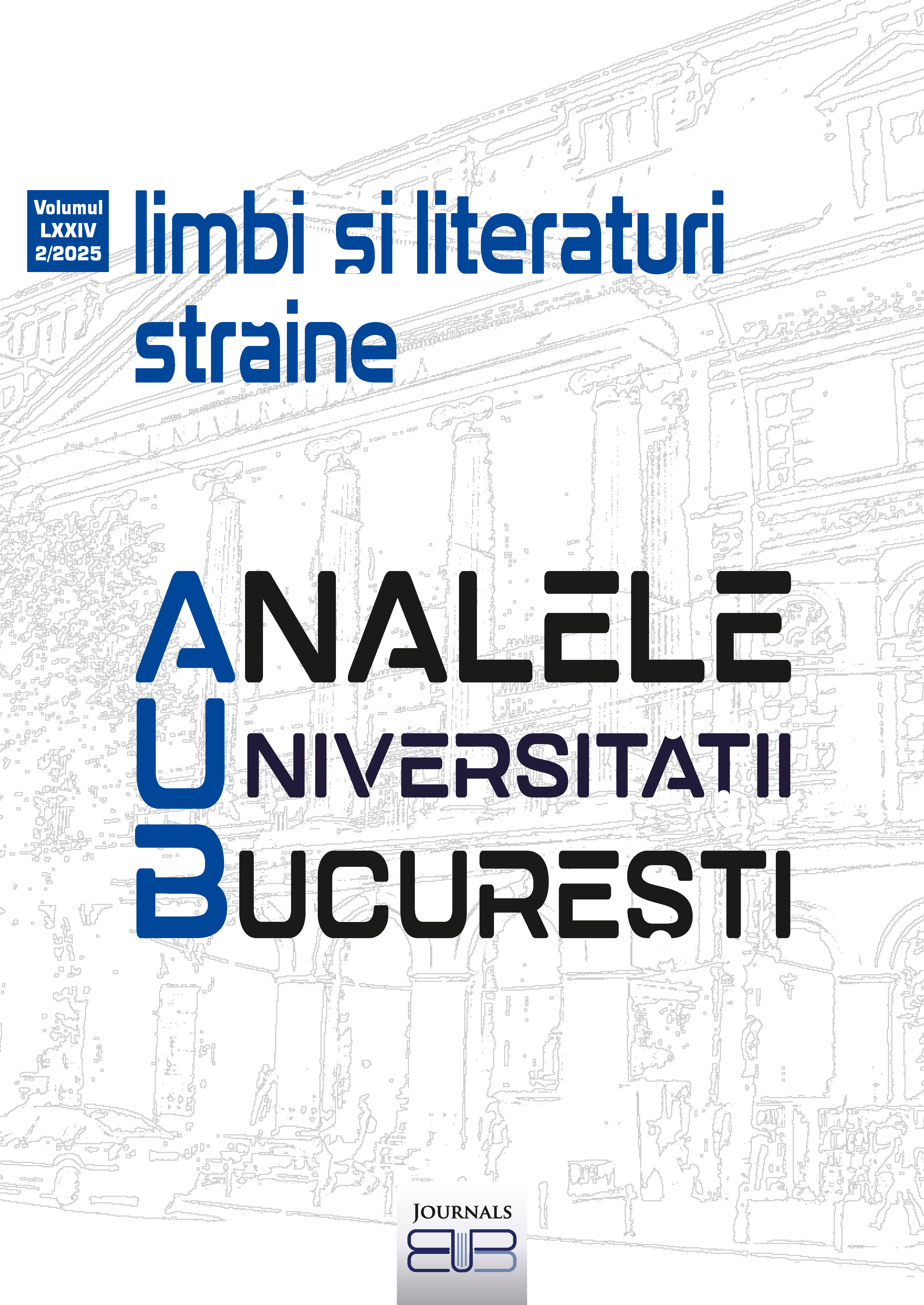
LINGVISTICĂ / LINGUISTIQUE / LINGUISTICS
Advances in Linguistic Analysis: from Syntactic Representations to Acquisition and Beyond Selected Proceedings of the Annual International Conference of the Faculty of Foreign
Languages and Literatures, November 2024
Full Issue
Articles
-
THE INTRICACIES OF THE RUSSIAN NUMERAL SYSTEM. AN INSIGHT INTO CARDINAL AND COLLECTIVE NUMERALS
Abstract
The present study aims to investigate constructions with collective and cardinal numerals accompanied by nouns denoting people in the Russian language. By closely examining constructions that follow such patterns, I will explore the possibility that numerals function as a type of classifier, whether morphological or semantic (Yanko, 2004). Thus, I will take a closer look at the nouns selected by numerals and the restrictions imposed on them. In this article I will also advance two proposals: one that is concerned with the case
assigned by collective numerals and the other linked to the analysis of higher numerals as morphological classifiers. -
ON NEGATION AND DISJUNCTION IN L2 ENGLISH IN AN L1 ROMANIAN CONTEXT
Abstract
This experimental study investigates how Romanian-speaking learners of L2 English interpret disjunction in negative sentences, focusing on whether they exhibit L1 transfer effects from Romanian or successfully acquire the English pattern. While English and Romanian are traditionally considered to fall in the same category according to the Disjunction Parameter (Szabolcsi, 2002), favouring the conjunctive interpretation (-PPI value), recent research (Lungu et al., 2021) suggests that Romanian speakers prefer the disjunctive reading (+PPI value).
Through three experimental studies, I investigated: (i) how English speakers interpret disjunction in negative sentences, (ii) how Romanian speakers interpret disjunction, and (iii) because I found differences, how Romanian-speaking learners of L2 English interpret disjunction. The results of the first two studies showed that there are differences between the preferred interpretation of disjunction in negative sentences in English and Romanian. Based on these results, I conducted a third study to investigate how Romanian learners of L2 English interpret disjunction in English negative sentences. This study showed evidence of L1 transfer among L2 learners, supporting the Full Transfer Full Access Hypothesis (Schwartz & Sprouse, 1996), indicating that while L1 transfer initially influences L2 acquisition, learners can ultimately reset parameter values based on L2 input. -
ON THE ACQUISITION OF MOTION IN ENGLISH
Abstract
This paper discusses the acquisition of motion of native English speakers within Talmy’s (1985, 2000) typological classification of languages, the lexical elements involved in the expression of motion and the syntactic patterns emerging from their combination.
Talmy introduces a two-class typology based on how a language encodes Path of motion; he distinguishes between Satellite-framed languages (Path conveyed by a satellite: a preposition, a particle, a prefix, a directional adverb), and Verb-framed languages (the verb itself encodes Path). In this typology, English is a Sattellite-framed language. A CHILDES corpus (Berman & Slobin (1994)) of narratives was analyzed. Participants had to describe images from a frog-story picture book. Five syntactic patterns used to express motion in English were systematically investigated in terms of frequency of occurence: bare directed motion, directed motion with a manner component, Path-Manner verbs (Drăgan (2012, 2022)), Goal of Motion constructions and located motion. Talmy claims that English speakers prefer Goal of Motion construction (manner-of-motion verb with a PP), however the preferred option seems to be the bare directed motion pattern. This paper provides a comprehensive view of language acquisition and development regarding the expression of motion, exploring the intricate relations between lexical items, syntactic structures and age-related changes. -
LINGUISTIC EVIDENCE IN TRADEMARK DISPUTES: A FORENSIC ANALYSIS OF LEXICAL, SEMANTIC, AND SYNTACTIC MARKERS
Abstract
Trademark disputes imply a linguistic battle over a term or a sequence of terms. Linguistic methods focusing on lexical, semantic and syntactic analysis can play an important role in assessing similarities, differences or the possibility of consumer confusion. The paper presents three real trademark cases from two distinguished linguists, who were called upon as expert witnesses to identify how lexical choices, semantic content and syntactic patterns can affect legal interpretation. Linguistic evidence withdrawn from corpus analysis can be very valuable in a trademark case. The work of the linguist consists in investigating how often the contested term appears in large corpora and in determining whether only the plaintiff has the right to use that certain word or not.
-
REDUNDANCY AND IDENTIFIABILITY AS CRUCIAL ELEMENTS FOR ANTICIPATION IN SI
Abstract
Anticipation is a crucial aspect in the activity of simultaneous conference interpreting (SI). The interpreter has to predict, based on linguistic, cognitive, situational, and pragmatic inferences, the direction in which the speaker develops the discourse, in order to avoid informational overload and be able to recreate in the target language (TL), the message uttered by the speaker in the source language (SL). One theoretical model that aims to describe the mental processes behind SI it that of Ghelly Chernov. Influenced by the Russian school of psycholinguistics, Chernov views SI activity as a mental process involving, besides linguistic competences, the ability of the interpreter to ‘make sense’ of the speaker by correctly identifying the relevant new information, the rheme, and how this fits into the broader referential framework of the discourse, provided by its theme. Its success relies heavily on the redundancy of the discourse,
manifested by iteration and interdependence, which allows the interpreter to make inferences based on the information gradually being revealed by the unfolding speech. A contributing factor to redundancy is the identifiability of referents in the discourse, as theorized by Wallace Chafe. This paper points at the potential complementarities of the two theoretical approaches.
Book Reviews
-
GABRIELA BÎLBÎIE. 2024. Sintaxa construcțiilor coordonate în limba română Editura Universității din București, București, 295 p. ISBN 978-606-16-1457-8
Abstract
In this book, Gabriela Bîlbîie offers a significant contribution to the syntax of coordination in Romanian, a topic that has remained relatively underexplored in the linguistic literature. The author's comprehensive classification of conjunctions in Romanian, alongside diagnostic tests and detailed syntactic analyses of coordination phenomena, offers a solid theoretical framework that enriches our understanding of coordination patterns in Romanian. Furthermore, the exploration of related constructions such as gapping and right node raising addresses complex issues that have received limited attention in Romanian linguistic literature. These contributions mark an important step forward in the study of Romanian syntax and help broaden the scope of cross-linguistic syntactic inquiry.

